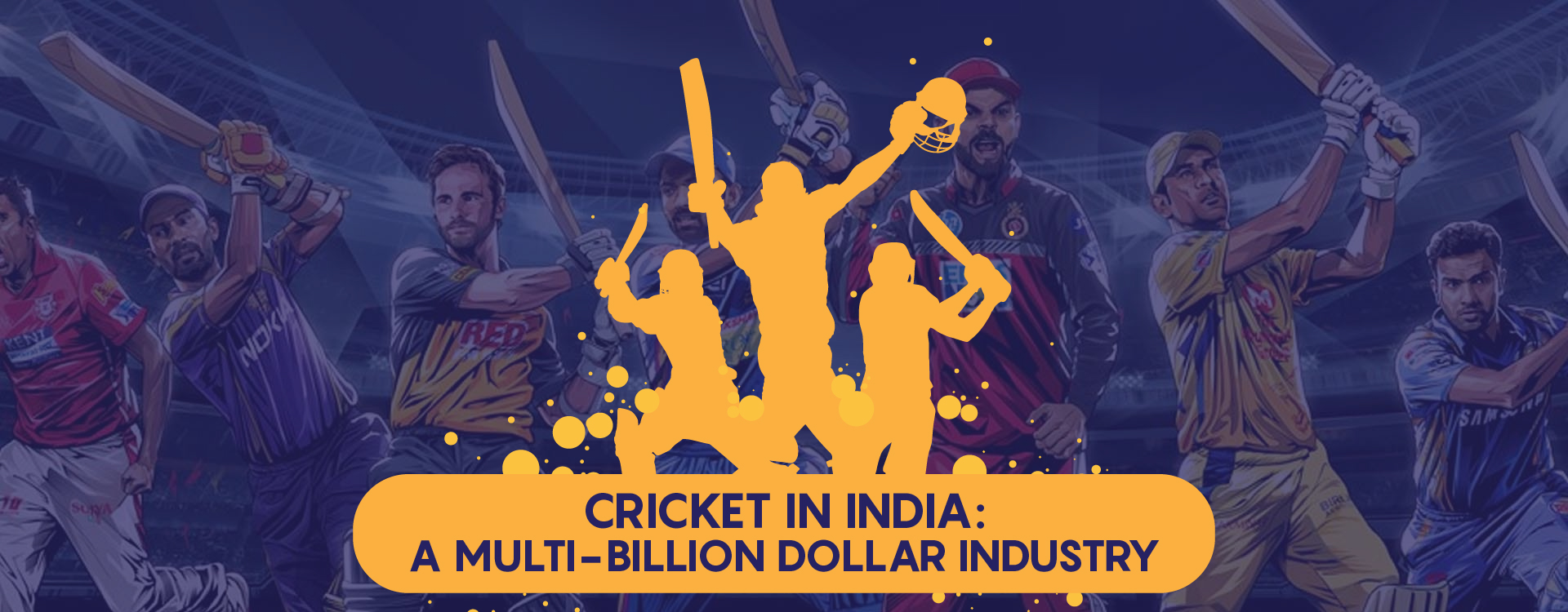Cricket, the ‘gentleman’s game’, has leapt far beyond Britain’s boundaries over the decades. It has been adopted with more excellent skills and enthusiasm by the erstwhile colonies of the empire. And India has led the game for a long time now. India has been such a pioneer of the game that not only is its team the world’s number one, cricket is also the most profitable sport in India.
According to the report Impact of COVID-19 on Revenues of World Cricket and Indian Sports, Indian cricket revenue is approximately 45% of total world’s cricket incomes, 75% of which comes from IPL. Cricket accounts for nearly 85% of the Indian sports marketplace, with the Indian Premier League (IPL) being a significant contributor, while other sports including Football and Kabbadi follow the rank.
Let’s look into what has made cricket more than a genuinely Indian sport – a highly profitable business enterprise.
Indian Premier League (IPL) and Indian Cricket go hand-in-hand
India is a crucial performer in the global cricket economy. Cricket revenue in India accounts for 45% of the worldwide cricket industry’s valuation of $862.5 million, of which 75% is from the Indian Premier League (IPL). In an event year outside the ICC (International Cricket Council), the proportion of cricket sales in India increases by at least 10-15%.
According to the latest figures, out of the $ 1.9 billion in cricket revenue in 2019, about 72% came from cricket events’ emissions. Sponsors contributed 20%, and ticket entertainment sales were around 8% on the season’s games.
Besides Australia and the United Kingdom, which make large domestic transactions worth $1 billion each over four years, most other cricket boards rely on the Indian cricket market to strike bilateral deals with Indian broadcasters.
Despite being a cricket World Cup year in 2019, Indian Premier League (IPL) profit was 30% higher than the World Cup profit. The income from IPL 2021 is expected to be 70% higher than ICC WT20 in 2020.
When cricket took an Indian Spin- the Indian Premier League (IPL)
Launched in 2008, the Indian Premier League was led by Lalit Modi, a leader from the Indian cricket spectrum who wanted to create a cricket league in India comparable to the football leagues abroad. The Indian Premier League (IPL) is relatively new as it is only in its 11th season. Yet, it has achieved more sponsors and revenue levels than Major League Baseball in the United States.
The Indian Premier League is about business first, then cricket. It is a lucrative business in which all participants wish to participate, even in difficult times like today’s pandemic. IPL gives a fair share of the Indian economy. According to the 2019 report by Duff & Phelps, the series is worth $4.4 billion. A survey by the KPMG Sports Advisory Group outlined that the league contributed $157 million to India’s GDP in 2019 and had a cumulative impact of $265 million (1.2% of GDP) on the economy in 2019.
‘‘
India has led cricket for a long time now and has been such a pioneer of the game that not only is its team the world's number one, cricket is also the most profitable sport.
Indian Premier League (IPL) Revenue Streams
The majority of India’s sports revenue comes from streaming and sponsorship, contributing 65% and 30%, respectively. Unlike many other markets, IPL’s ticket revenue is only 5%. Since sponsors are the key drivers of the tournament, the league earns from the sale of the sponsors’ rights.
After public discontent with Chinese products, arising from the 2020 skirmishes on the Indo-China border, subsided, the Chinese tech giant Vivo is back at the helm. It has returned as the primary sponsor of IPL 2021. Other main sponsors of the event are Dream11, Pepsi and DLF.
All sponsorship deals are how companies promote their brands in the championship, as their names are mentioned, announced and photographed thousands of times. Many creative methods have emerged in the sponsorship industry over the years. IPL generates around Rs 700 crore ($ 95.6 million) per year from sponsors alone.
A lot is there in IPL to go around
While direct participants of the IPL mint fortunes off the league, there are a myriad of ways that businesses and entrepreneurs make money from the game. Celebrities get paid for appearances, and cheerleaders, media managers, marketing companies, and many other types of service providers also earn from the IPL.
The Indian Premier League is a behemoth in India’s sports scene, and everyone wants a piece of its large stakes. That is the reason why many start-ups like Unacademy, CRED, Byju’s and others have thrown their weight behind the league with the hopes of positive marketing and business expansion.
It is clear that the IPL is the grandest show in India, and it will go on for a long time, leading the change and its business spirit along the way.





I think the size and value of Cricket in India as a sport has grown along side the Audio and then Visual media which enhanced its value as a source and medium for publicity and advertisement. So we should analyze the periods in which the commercial and financial value of Cricket as a Sports Industry increased particularly in India. This will tell us whether or not it happened along with growing market commercialization and liberalization before or after 1990.
Dr. Shri Prakash